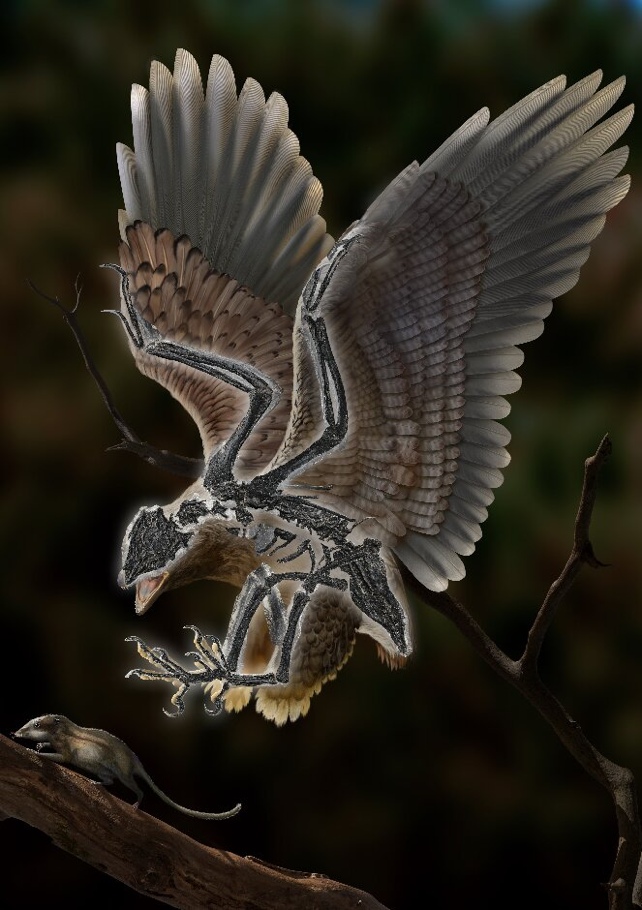An Odd Mixture of a Dinosaur and a Bird, This Prehistoric Beast Is a True Mystery

Although paleontologists are still baffled by the remarkable evolutionary process that gave rise to birds, we can declare with confidence that they are descended from dinosaurs.
In light of this, the discovery of a full fossilized skeleton of a creature that resided in what is now China some 120 million years ago may provide light on important milestones in the metamorphosis process, since it displays a more ancient, dinosaur-like head on top of a frame more simillar to current birds. In order to evolve into modern birds, dinosaurs underwent some of the most radical shifts in anatomy, ecology, and lifestyle.
The manner that current birds evolve still displays some of these morphological transitions. However, the specific timing of these transitions and the evolutionary forces that yielded uniquely avian traits are still up for discussion.
The discovery of the Cratonavis zhui fossil, which is interesting and unique to science, might provide light on the development of contemporary birds.
The discovery
A body cast of the dinosaur-headed bird Cratonavis was uncovered in northern China by researchers.
Sedimentary rocks here date back to the Cretaceous era, around 120 million years, and include the imprints of a variety of feathered dinosaurs as well as early birds, such as Confuciusornis sanctus.
The scientists, led by paleontologist Zhou Zhonghe of the Chinese Academy of Sciences (CAS), scanned the ancient skull in high resolution to begin their research. The scientists used the 3D models of the calcified bones to rebuild the skull’s form and function as they would have existed when the bird was alive. The study demonstrates that the Cratonavis cranium is very similar to those of dinosaurs like Tyrannosaurus rex, rather than a bird’s.
Insights on the significance of evolutionary mixes in the early diversity of birds are bolstered by the discovery of a dinosaur’s akinetic head fused with a bird’s skeleton. Cratonavis is located in the dinosaur family tree’s avian branches between the reptile-like long-tailed Archaeopteryx and the more advanced Ornithothoraces.
In addition, the Cratonavis fossil is intriguing because it possesses a scapula and first foot bone that are very lengthy for a dinosaur-derived bird fossil and completely missing in current birds. The first metatarsal of birds has become shorter through time. The authors of the research hypothesize that natural selection shortened the first metatarsal during the transition from dinosaurs to birds. It served fewer purposes as it reached its ideal size, which was less than a fourth the length of the second metatarsal.
Cratonavis is more closely related to the Late Cretaceous Balaur, a dromaeosaurid carnivore with a similarly expanded metatarsal. Cretaceous birds like Yixianornis and Apsaravis also had extended scapulae. For lack of a breastbone modified to give a wider surface for the meaty pectoral muscles to connect to, Cratonavis likely made up for it with a very long scapula. There’s a chance that this extinct species helped with a study of animal flight behavior.
These changes imply morphological exploration in volant activity at an early stage in bird evolution, as explained by paleontologist and main scientist Min Wang, who says that the elongate scapula might improve the mechanical benefit of muscle for humerus retraction/rotation. The authors note that the unusual scapula and metatarsal shapes seen in Cratonavis demonstrate the remarkable degree of skeletal flexibility shown by the earliest birds.
The hybrid morphology of Cratonavis zhui is indicative of the fact that the development of birds of all feathers happened concurrently through a broad range of diverse pathways, and not as a transitional form between two great groups of creatures.
0 comments